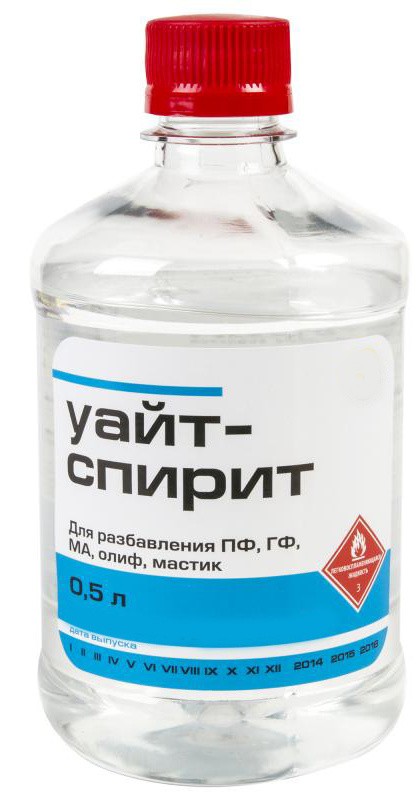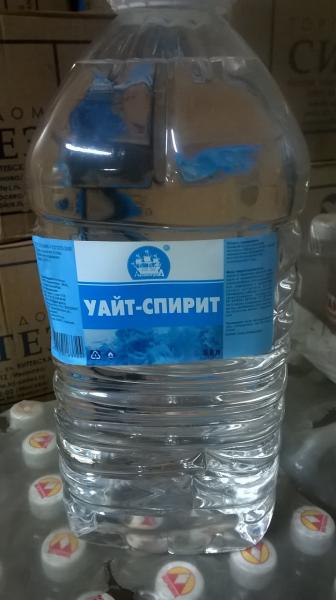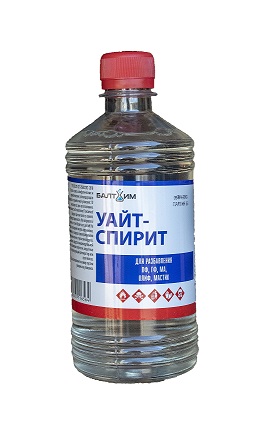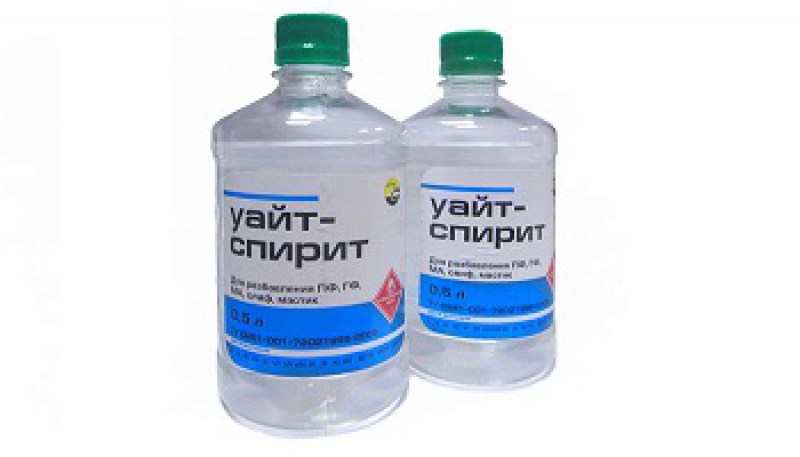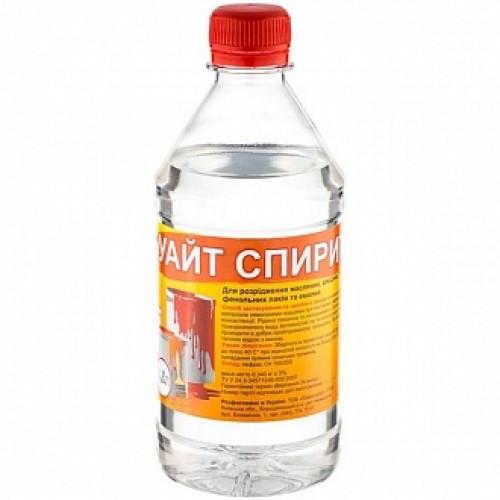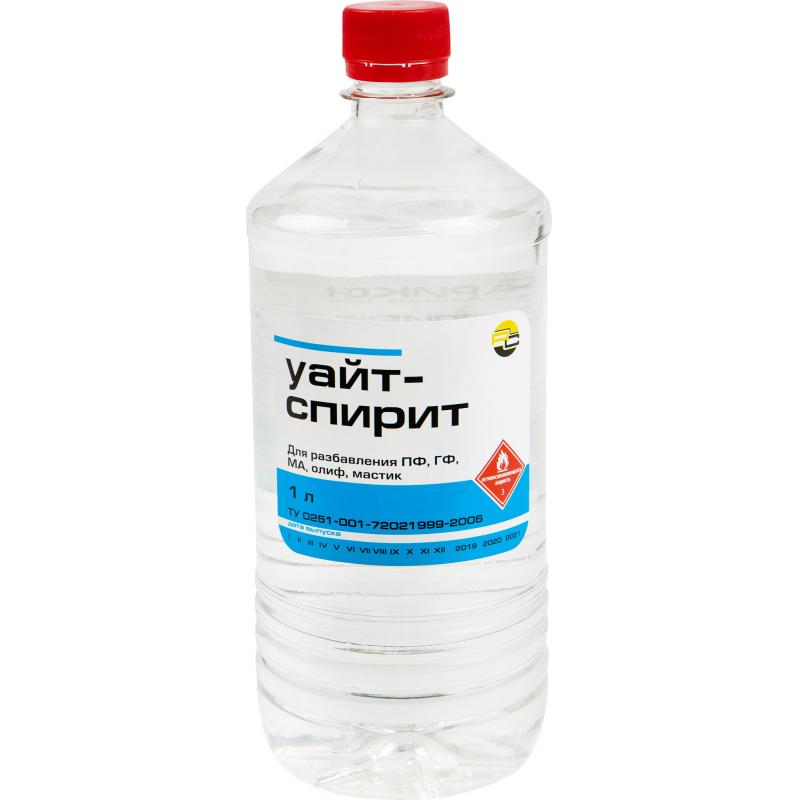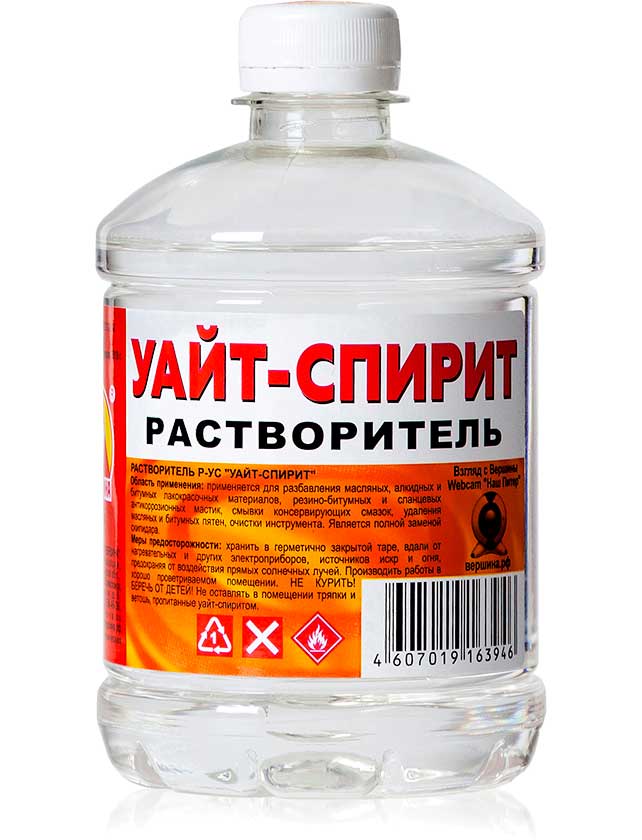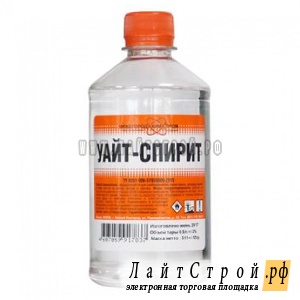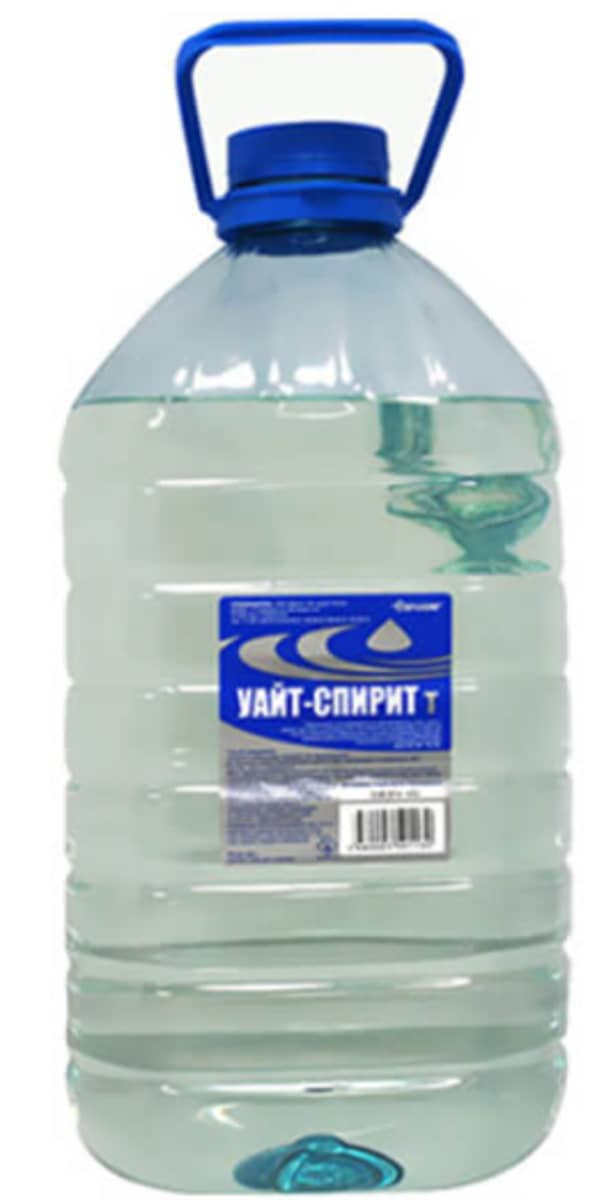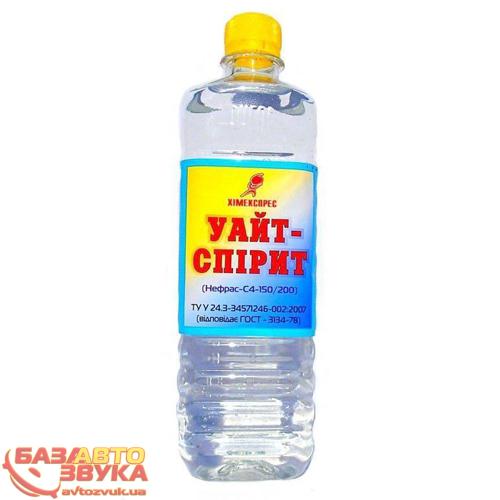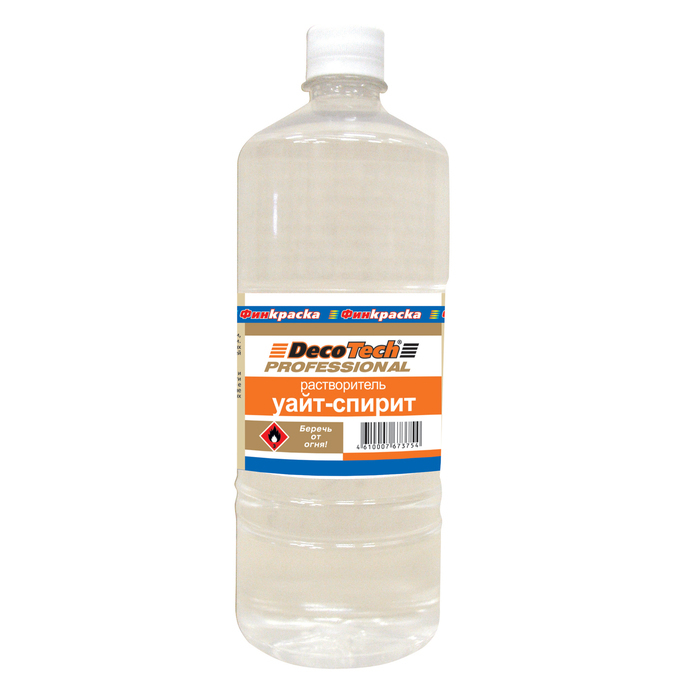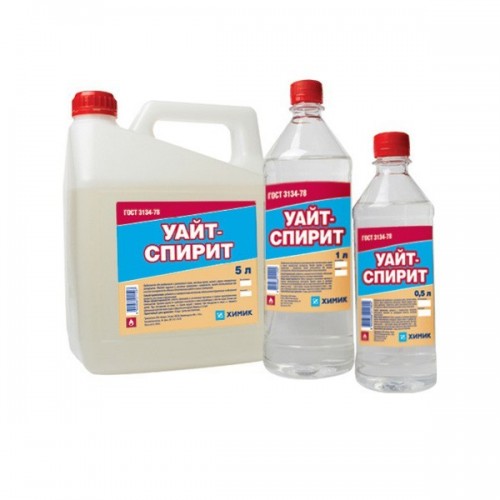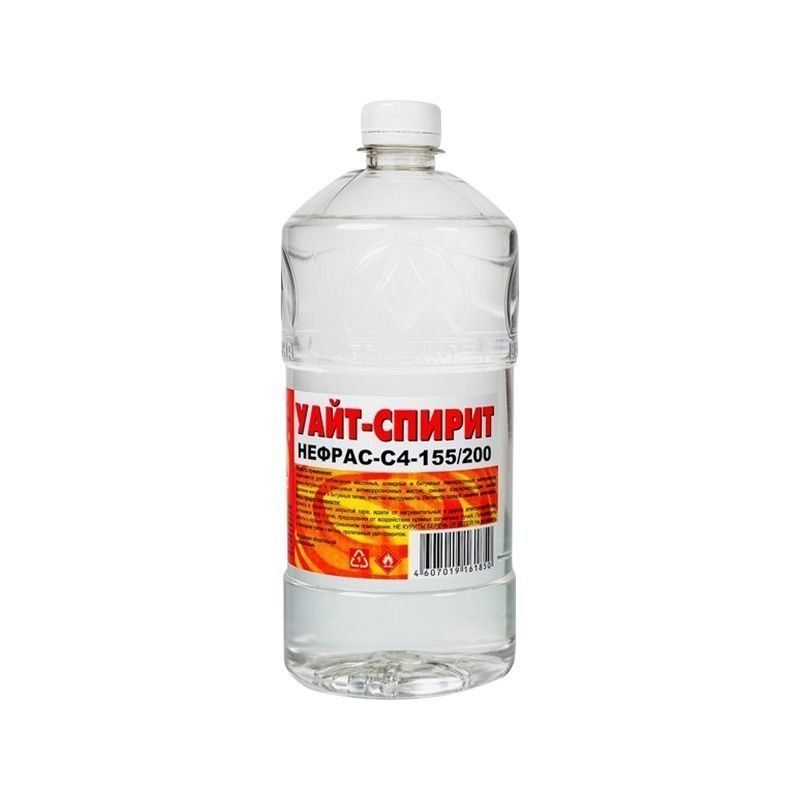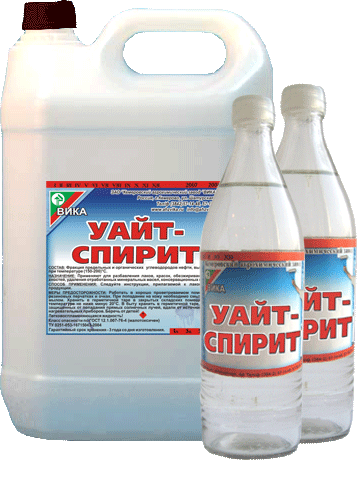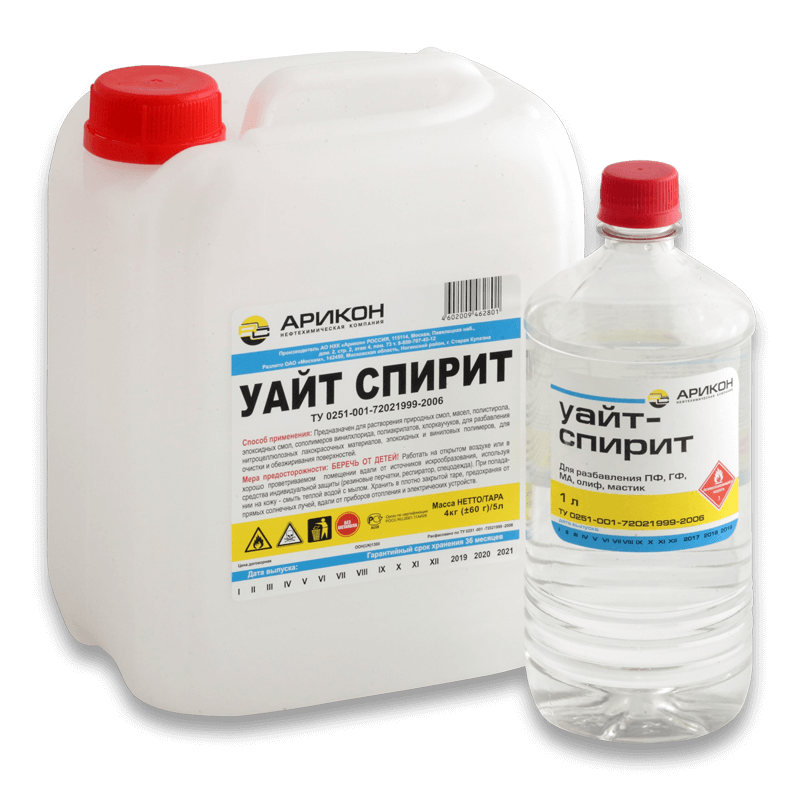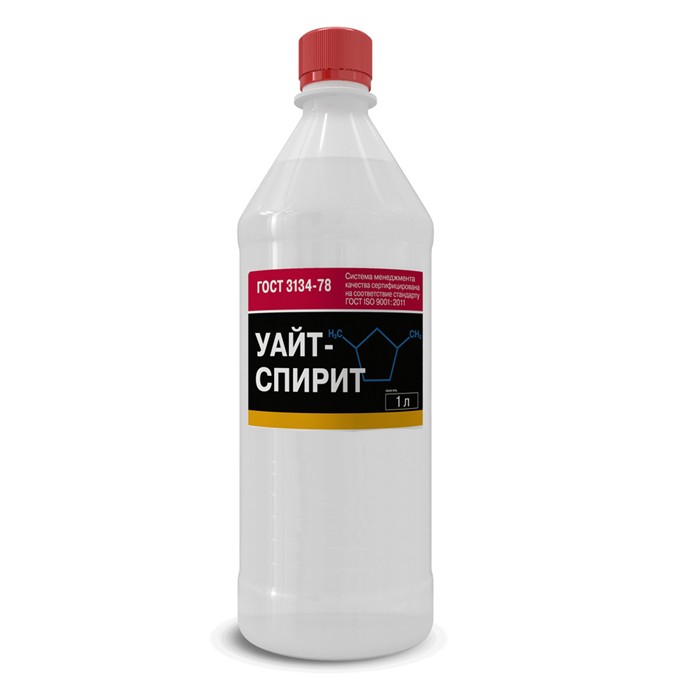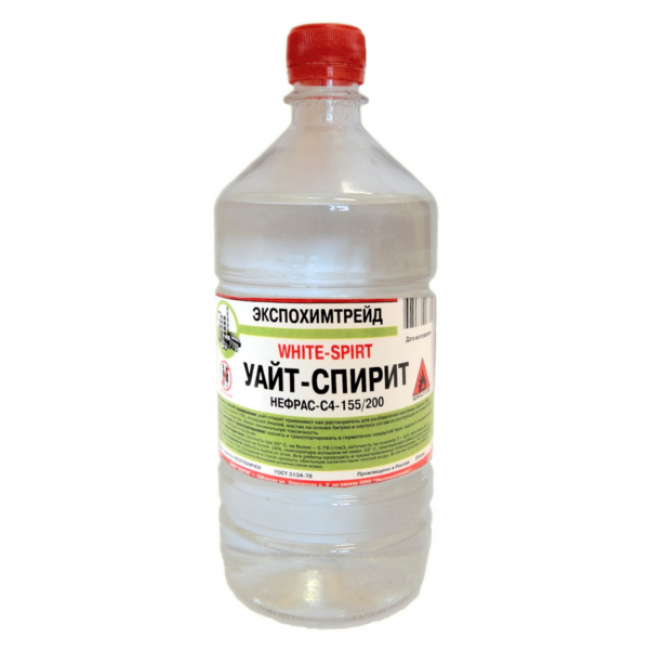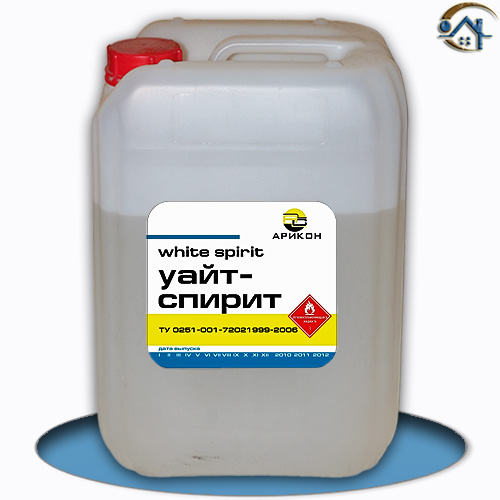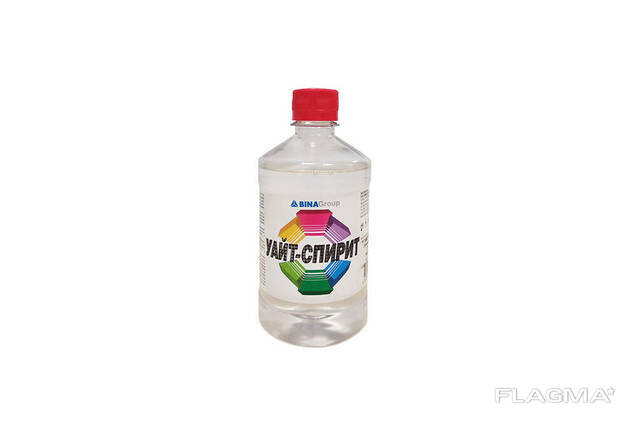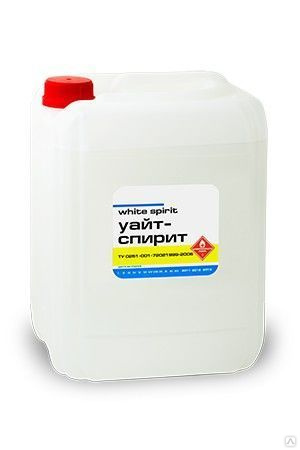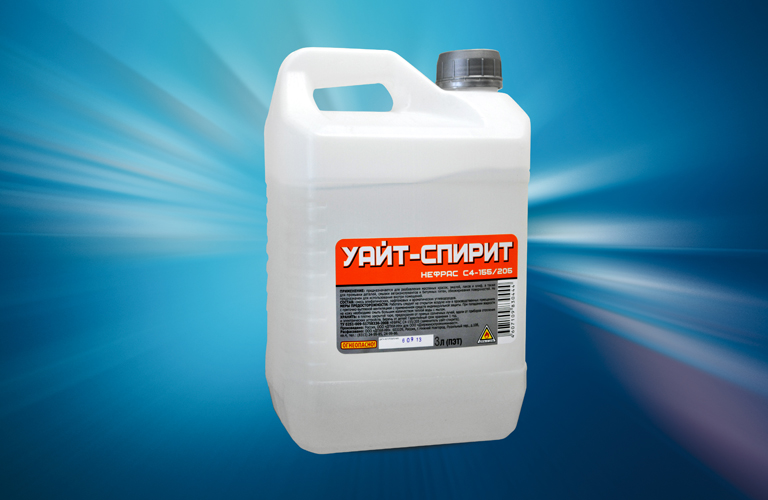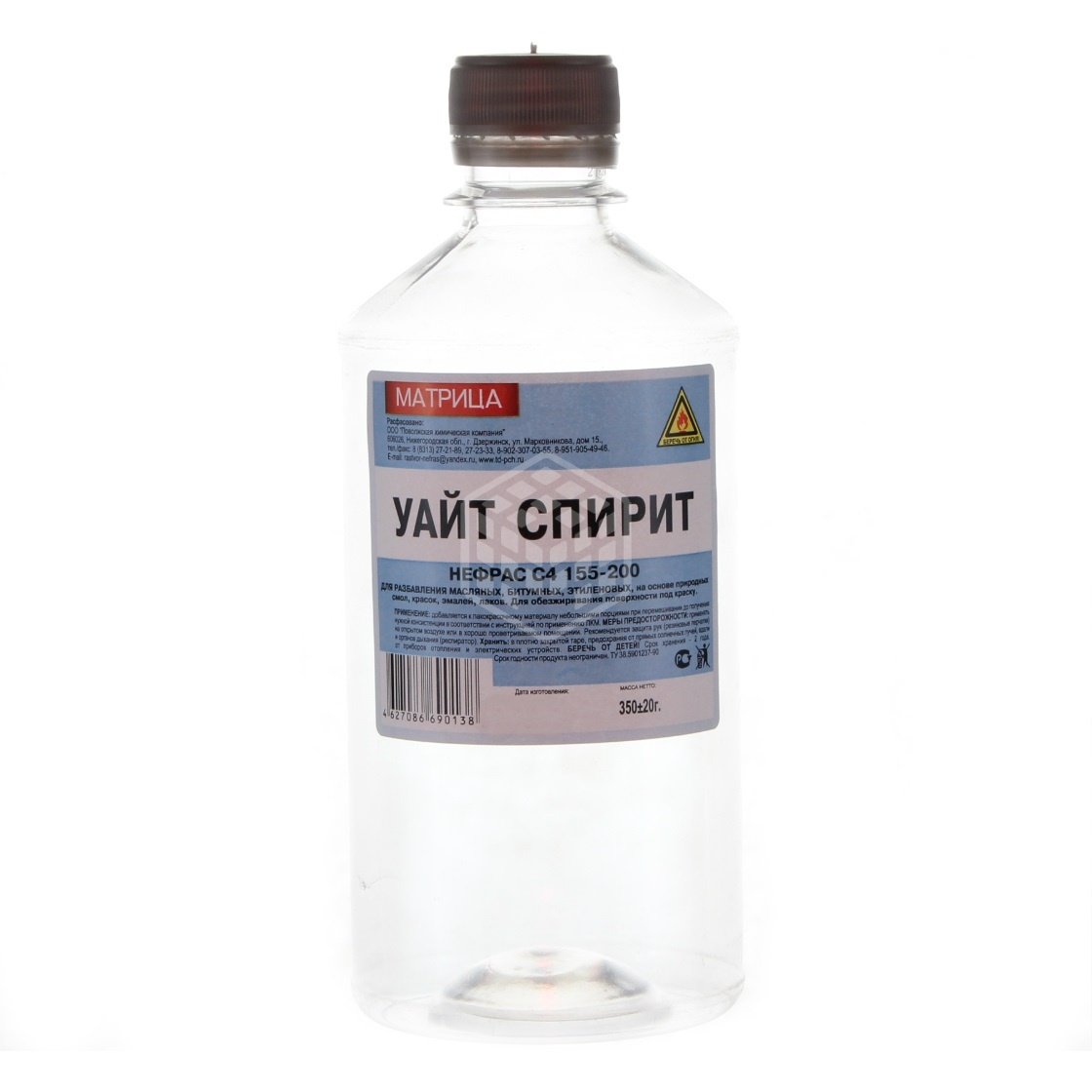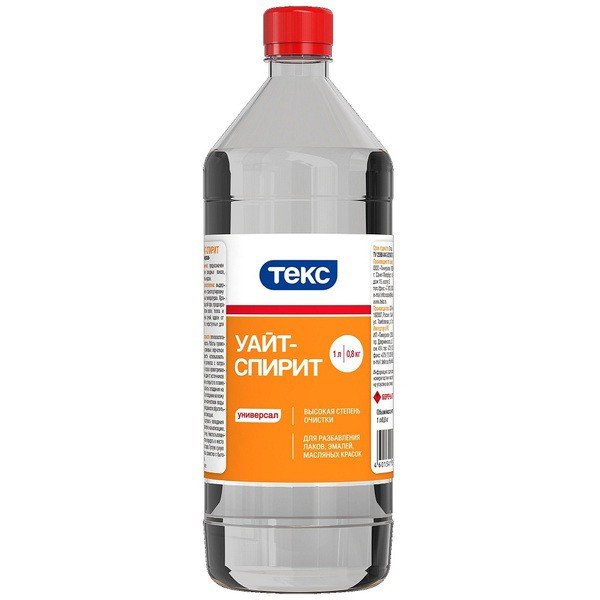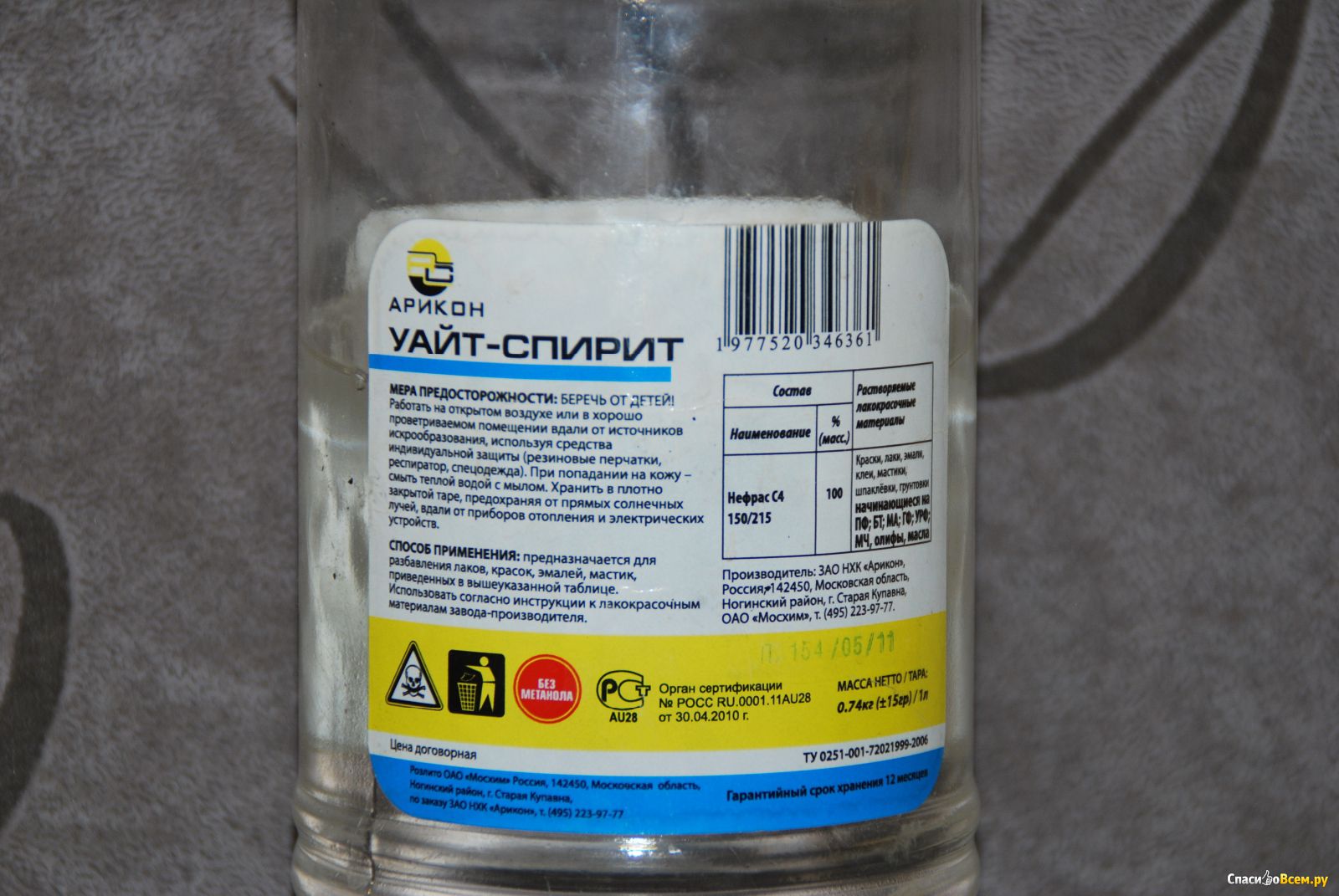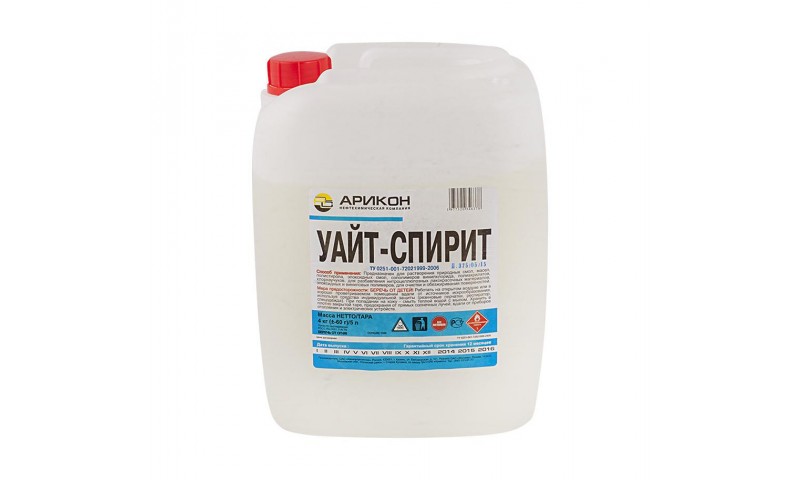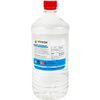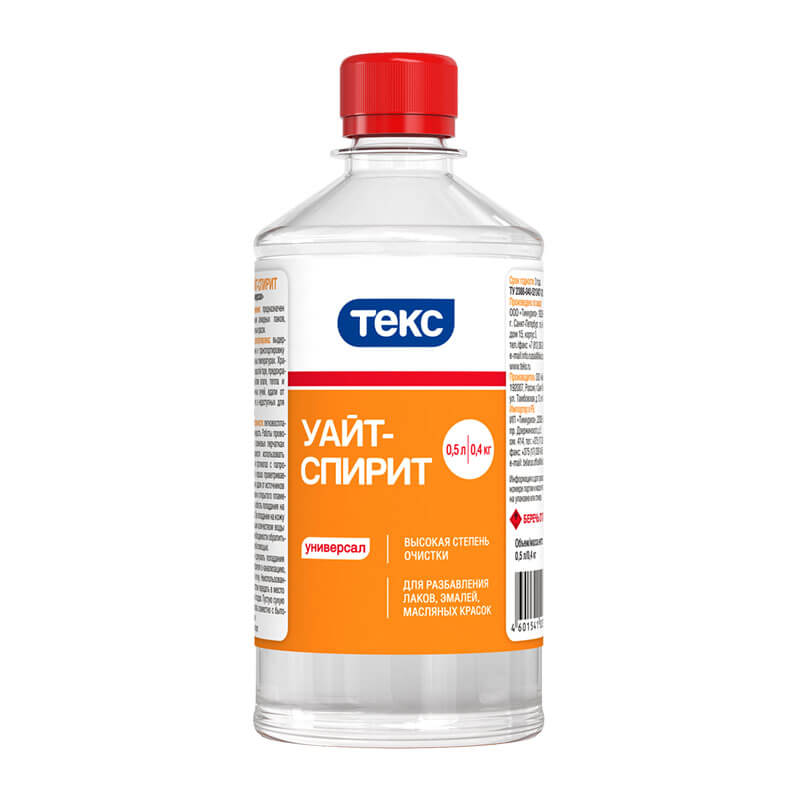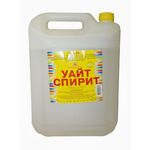Application area
White spirit is used mainly as a solvent for any fractions of oil, sulfur compounds, nitrogen, oxygen. It can also dissolve vegetable fats. The ability to dissolve fats is used if it is necessary to clean the surface before priming, painting, etc. It is actively used before applying paint and varnish coatings (LCP) to metals.

Before painting the metal, it should be treated with white spirit - the paint will hold better
For cleansing
You should not use this solvent to clean fabrics or highly absorbent surfaces - you will struggle with the smell for a long time and persistently. It is very difficult to defeat him. The most effective way is hot (superheated) steam treatment. So that the substances that give the smell are heated and volatilized. It is worth knowing that white spirit begins to boil at 165 ° C, and evaporates completely at 200 ° C. If the surface can be heated to a similar temperature, the volatiles evaporate and the odor is reduced.
With smooth surfaces, there are no such problems - it evaporates instantly. Outdoors or in a well-ventilated area, the smell is faint. During renovation and construction, white spirit can be used to remove old paint, fillers, oil and grease stains. Another useful property is that it well removes the glue that remains after removing the scotch tape, rosin stains.
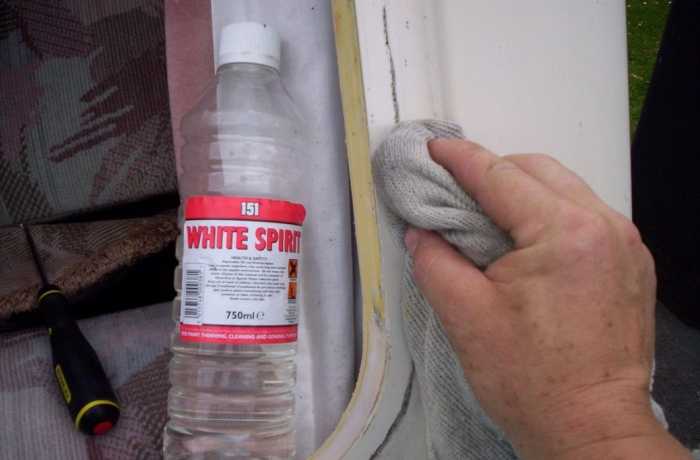
No need to pour solvent - slightly dampen the edge of the cloth or sponge
White spirit is also used to degrease natural leather. Since there is no chlorine in the composition, it does not change the properties, color and texture. It can be used to protect or "treat" wood from mold and mildew. The liquid penetrates deep into the pores, destroying the source of damage. In addition, the paint adheres better and the consumption is reduced. That is, white spirit can be used as a primer and antibacterial protection for wood.
As a solvent
Despite the fact that the dissolving power of white spirit is average, it is often used to dilute many formulations to the desired consistency. In this case, a solvent is introduced into the composition, and not vice versa. Mix thoroughly until smooth. As a solvent, white spirit is used with the following formulations:
- oil paints;
- antibacterial impregnation for wood;
- drying oil;
- alkyd enamels;
- alkyd varnishes;
- bituminous mastics;
-
rubber mastics.
Work better with gloves, use a wooden stick
When combined with paint, white spirit reduces its viscosity. The composition is better applied and distributed, and consumption is reduced. But it is worth remembering that after drying, the surface will be glossy. If you need a matte finish, look for another solvent.
Diluted to a more liquid state with white spirit and putty. But only those that have an appropriate basis:
- ML - melamine,
- M - oil and alkyd styrene;
- PF - pentaphthalic;
- MCh - urea;
- VN - divinylacetylene.
White spirit is popular among car owners as a means for removing car mastics. Cleans all bitumen-based compounds and slate mastics. It removes well the lubricants with which the parts are treated to protect them from corrosion (auto preservatives). It's just worth remembering that the liquid is highly corrosive. That is, you should not allow prolonged contact with the surface. If a puddle has formed, it must be quickly removed, the place is wiped dry.

Stains are well removed from the paintwork of cars
Interesting: Mosaic Caramelle - brand product overview
What is Solvent 646?
The list of materials that are needed when carrying out paintwork is great, these are paints, rollers, brushes, primer, acetone-containing mixtures. Thinner 646 is a liquid with a characteristic odor, colorless, with a yellowish tinge, which is a mixture of special substances that easily dissolve any kind of paint in order to achieve the required consistency of the composition. The reagent may be added to primers and putty mixtures.A quality solvent should be homogeneous, without sediment and turbid impurities. The chemical additive is sold in various containers:
- metal containers;
- glass bottles;
- plastic canisters.

Solvent composition 646
The unique, time-tested formula of a liquid agent designed to dissolve various compounds is controlled by GOST. Due to the fact that the composition of the multicomponent solvent 646 includes substances that are classified as hazardous, some manufacturers are guided in production by TU standards, according to which their content in the product can be greatly reduced. According to the standards, the following components are included in 1 liter of liquid:
- 100 ml of butyl acetate;
- 150 ml of ethyl alcohol;
- 100 ml of butanol;
- 80 ml ethyl cellosolve;
- 70 ml of acetone;
- 500 ml of toluene.
Degreasing metal surfaces
Degreasing consists in removing from the surface of conservation oils, cutting fluids, residues of paint and varnish material, various stains
The importance of this stage cannot be underestimated. Especially when it comes to preparing a metal surface for painting
After all, only a perfectly clean surface can be considered a guarantee of high-quality painting.
White spirit is widely used in the preparation of car bodies for painting. As a rule, here it is necessary to remove such contaminants as bitumen, rubber, mastic stains. For these purposes, kerosene was also used earlier. White spirit also belongs to the so-called light kerosene. However, there is a significant difference between the two.
After degreasing the body surface with white spirit, most of the solvent evaporates. Part of the substance in the form of a film that remains on the cleaned surface does not impair the quality of the paint. Regular or heavy kerosene is not removed as easily without consequences. Moreover, it is difficult to wash off with water.
Experienced craftsmen practically no longer use acetone or gasoline to degrease the body. These substances are highly flammable. In contrast to them, white spirit, having less pronounced volatile properties, is a safer product for use in such purposes. In addition, it is chemically neutral to metal and poses no danger to it.
Another important advantage of this solvent is that it does not dissolve the body paint, even if there are scratches and scuffs. Therefore, most of the bodywork painters use white spirit.
When working with it, you must follow a number of rules, which will be discussed below.
Thinner brand 647
Specifications, composition
Another popular and inexpensive tool is solvent number 647. It differs from P 646 in the field of application and composition. This thinner has no acetone at all and is therefore considered less aggressive + can be used for plastics.
The description of this brand of solvent includes the following characteristics:
- Appearance - transparent liquid with yellowness (sometimes colorless) without suspension, homogeneous.
- Water content - no more than 0.7%.
- The volatility of the substance is from 7 to 12.
- Acid number - no more than 0.065 mg KOH per gram.
- Coagulation number - not less than 63%.
- The density of the solution is 0.89 g / cm3.
If the solution is used to dilute nitro enamel, the film does not turn white after the solvent has evaporated. Scratches and streaks on the surface are smoothed out after covering with diluted enamel.
According to GOST, the composition is as follows:
- Butanol.
- Butyl acetate.
- Ethyl acetate.
- Toulol.
Application area
P 647 is often used to increase the viscosity of materials containing nitrocellulose. But what's the difference between number 646 and number 647 in application?
Security
Precautions are similar to those for the P 646:
- The solvent should be stored in a closed container and in a place that is safe, away from sunlight.
- In the room where the work will be carried out, there must be good forced ventilation, since even if there is no acetone in P 647, it is still toxic and cannot be inhaled.
- Avoid contact with eyes. Work only with gloves and goggles, if the solution comes into contact with the skin, immediately wash everything with soap.
Like solvent grade 646, P 647 is sold for domestic needs in a canister with a volume of one to ten liters, and for use on an industrial scale in steel barrels.
Types of solvents
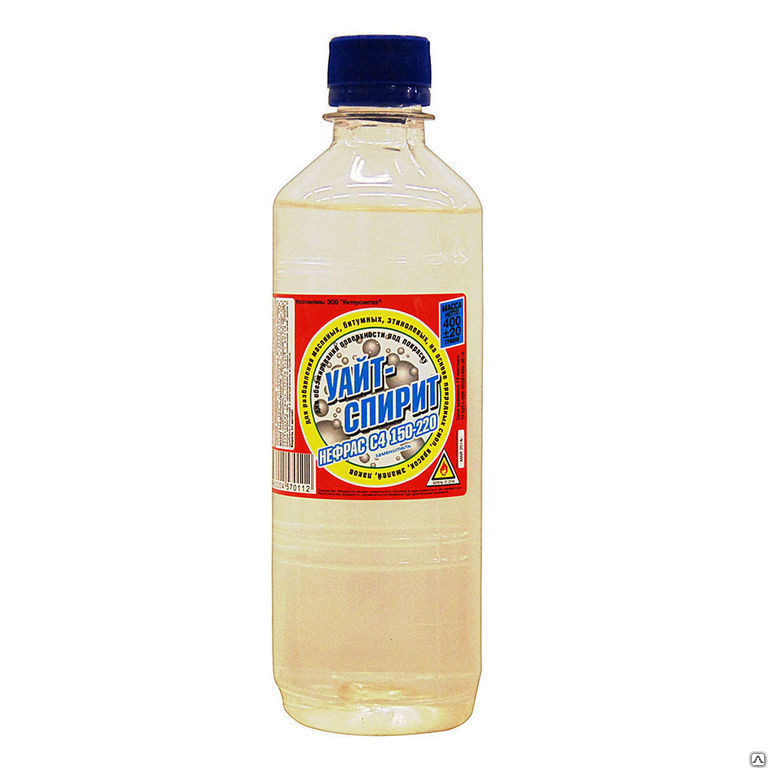 White Spirit
White Spirit
Solvent gasoline is a product of petroleum distillation. Its physical characteristics are as follows: clear, colorless liquid. Purpose: dissolution of nitro paints and some types of resins, as well as oil paints. In the case of paints and varnishes, the dosage of white spirit must be limited to 10% of the total mass of the paint and varnish material.
Turpentine
Colorless, often transparent, sometimes with a reddish or dark red tint, a liquid that is usually used in diluting paints and accelerating the drying of paintwork. Turpentine is mainly used to dilute oil paints
If you choose between refined and unrefined turpentine, then for painting surfaces you should pay attention to refined turpentine
Turpentine is highly flammable. Wood (unrefined) turpentine is obtained by dry distillation of wood; Gum turpentine - by distilling the resin of coniferous species The first must undergo additional processing, due to which the coloring components contained in the wood turpentine will disappear from the solvent composition.
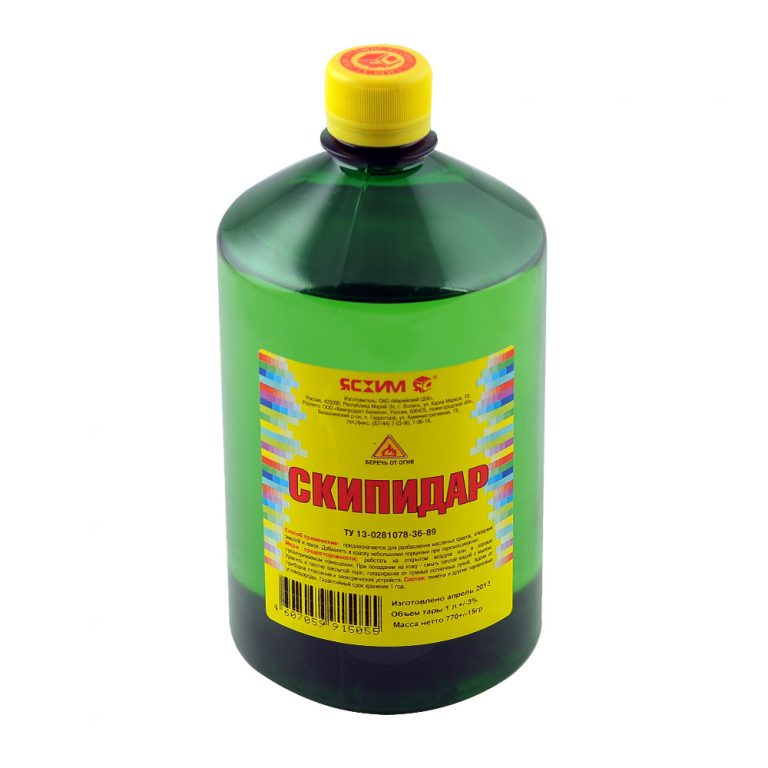 To understand whether you are satisfied with the quality of turpentine, it is necessary to mix oil and turpentine in equal proportions to the surface. If, after a day, a strong film remains on the paintwork, the quality of the solvent is undoubted.
To understand whether you are satisfied with the quality of turpentine, it is necessary to mix oil and turpentine in equal proportions to the surface. If, after a day, a strong film remains on the paintwork, the quality of the solvent is undoubted.
Gum turpentine, or, as it is also called, turpentine oil, is more environmentally friendly than wood turpentine: it is distinguished by a calmer smell and lightness.
Turpentine is also used to degrease coatings, despite the high cost of this solvent, which is justified by the high quality of the working material.
Acetone, amyl acetate, ethyl acetate
Solvents used in the case of nitro paints. Since these substances are quite easily miscible with water, care must be taken not to get into them: this can cause whitening of the transparent film. If you add butyl alcohol solvents to the composition of these substances, then the gloss of the varnish film will significantly improve.
Solvent
Commercial coal is a mixture of aromatic hydrocarbons, which are obtained in the by-product coke production in the process of rectification of purified fractions of crude benzene. Physical characteristics of the solvent: it is a transparent colorless liquid, it is produced in three grades - A, B, C, which differ from each other in the following parameters: boiling point, density, small fluctuations in the content of chemicals such as sulfur and phenols in the composition.
Solvent is a high quality paint thinner, however, due to its toxicity, solvent is not as popular as turpentine. The solvent is used only for diluting pentaphthalic and glyphthalic paints.
Dichloroethane
The next solvent to be mentioned. This colorless, low-flammable liquid with a chloroform odor also tends to turn yellow due to exposure to sunlight.
Precautions when using this thinner: a prerequisite when working with this substance is the use of rubber gloves, since the thinner, due to the specific chemical composition, can significantly affect the skin of your hands
Driers
These are special additives that increase the decorative effect, as well as the water resistance of the ready-made dye composition.In addition, they can significantly reduce the amount of time required for drying oil paints, varnishes, drying oils, and oils. However, these additives have a rather serious drawback: when using them, the paint and varnish coating becomes extremely fragile, and therefore it is recommended, if possible, to do without their use in surface treatment.
Ideal solvents for some resins are substances such as gasoline and kerosene. They are also used for washing hands that are stained with paint and for cleaning work tools.
The use of a thinner in the home and industry
Widely known as many home craftsmen and housewives, as well as professional painters, also referred to as nefras (oil thinner), white spirit is used in various industries:
- In everyday life for small work on the repair of metal, wood, glass products.
- In the paint and varnish industry.
- When repairing equipment for wiping parts and removing greasy marks on surfaces to be further processed.
- For chemical cleaning of products made of artificial (except for polyvinyl chloride) fibers.

- The kerosene fraction of the solvent is used as the fuel equivalent of kerosene or lighting kerosene. In the latter case, high-purity grades are used, since aromatic hydrocarbons form a smoking flame.
- Solvent gasoline is very popular among collectors of antique coins and metal products, perfectly cleaning them from organic pollution.
- For creating a variety of protection and maintenance products for mechanisms and surfaces, such as varnishes for parquet floors.
White spirit is used to dilute oil-based and alkyd-based paints, as well as building varnishes. Excessively thickened oil or alkyd paint is brought to the required consistency using the same white spirit. The creation of such compounds as anti-rain for car windows, removing paint stains, removing protective films from plastic surfaces and traces of adhesive tapes and silicone is also not complete without this tool. It should be noted that for paints with low fat content and low-oil compositions, the use of one nefras is not enough.
With the help of solvent gasoline, they clean clothes, shoes (even from stubborn traces of bitumen) and accessories, parts of mechanisms, painting tools. The tool serves as an excellent solvent for varnishes, rubbers, oil paints and bitumen, as well as mastics based on them. It can also remove oil paint stains from the skin of your hands if painting has been done without gloves. Immediately after this, hands should be washed with warm water and soap and greased with a fat cream.
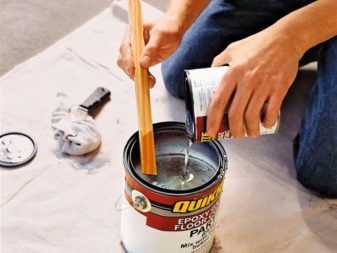
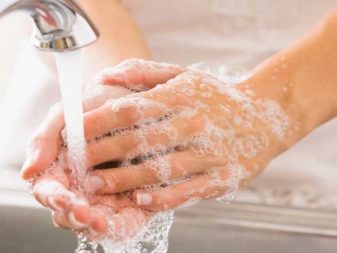
Alkyd enamels and other substances with a fairly large proportion of oils in their composition lend themselves well to the action of the solvent. White spirit is also used as one of the components in the creation of drying oils and more complex solvents. By adding white spirit (up to 10%) to the paint and varnish material, drying oil, putty and primer, you can reduce the consumption of finishing materials. The quality of the coating will remain unchanged, as will the technical parameters of the resulting protective layer.
The main advantages of the solvent include:
- acceptable cost;
- low level of toxic components;
- the rapid disappearance of a specific smell;
- a wide range of works carried out with its use.

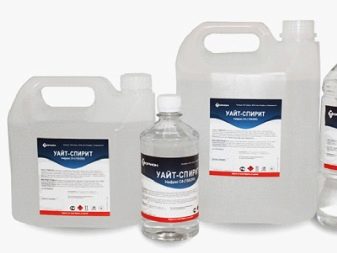
Which is better: ours or imported?
Despite the fact that the production technology is the same, imported white spirit has a weaker smell (and higher prices). This is due to the fact that the product goes through more stages of purification, which rid it of volatile compounds. It's good - it's easier to work, there is no headache and all other symptoms.
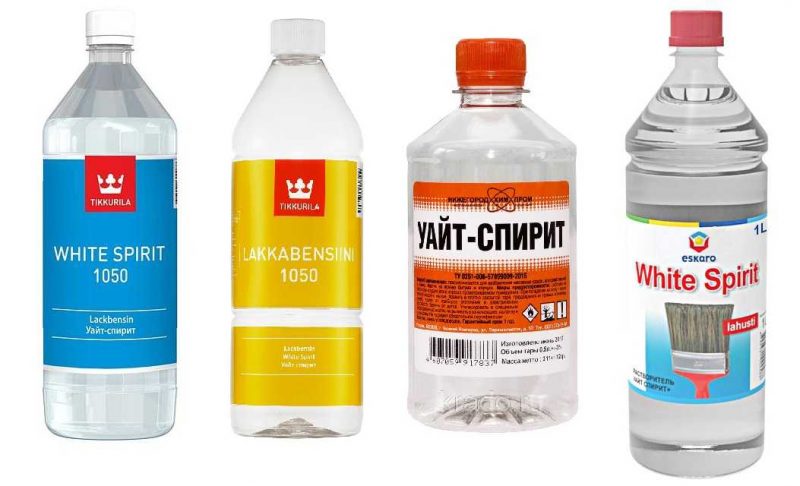
Each has its own advantages and disadvantages.
The bad news is that the dissolving power decreases during the cleaning process. This means that the flow rate will be higher. This is if we talk about adding to paints or mastics. The second point is that the stains will be rubbed off worse. This is if you use the substance as a stain remover. On the other hand, if you try to remove the stain from the fabric with white spirit with a low degree of cleaning, it will be extremely difficult to get rid of the smell (note that repeated washing does not help). It is clear that the less odorous the liquid, the easier the problem is solved. Perhaps for this reason, some manufacturers produce this type of solvent in several degrees of purification (for example, Tikkurilla - with blue and yellow labels). Different tools for different tasks.
Color and appearance:
White spirit is an almost colorless (has a yellowish tint), transparent oily liquid with a characteristic smell of kerosene. It should not contain visible mechanical impurities, the solvent has a homogeneous composition without signs of delamination.
Recommendations for the use of white spirit:
White spirit is introduced into the diluted paint and varnish material in small portions with constant stirring until the desired viscosity (consistency) is obtained.
When opening containers with white spirit, it is not allowed to use tools that give off a spark upon impact. Work with white spirit should be carried out at an ambient temperature of +5 to + 30 ° C and a relative humidity of no more than 85%.
When using white spirit, the requirements of work safety standards, fire safety rules, industrial sanitation must be observed. It is recommended to work with it with good ventilation or in a well-ventilated area using personal protective equipment. Avoid ingestion and inhalation.
Peculiarities
Solvents include rapidly evaporating reagent mixtures consisting of several active components. They dissolve organic substances and form homogeneous compounds with them.
The main task of the solvent is to dilute paints and varnishes, giving them the required working consistency, therefore, certain requirements are imposed on them:
- lack of any reaction with paints and varnishes;
- high evaporation rate;
- the composition must be non-hygroscopic;
- the interaction of the solvent and the dye composition should take place without any effort.
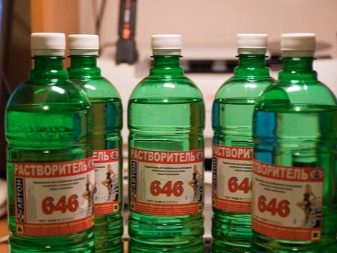
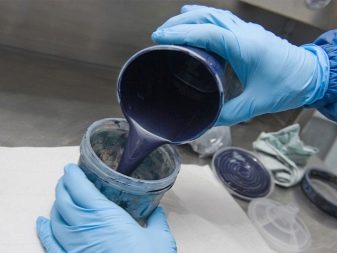
The solvent affects the paint only at the moment of its application, after which it evaporates without a trace. Each paint and varnish product corresponds to a certain type of solvent.
Thinner number 646 is a universal composition with a wide range of uses.
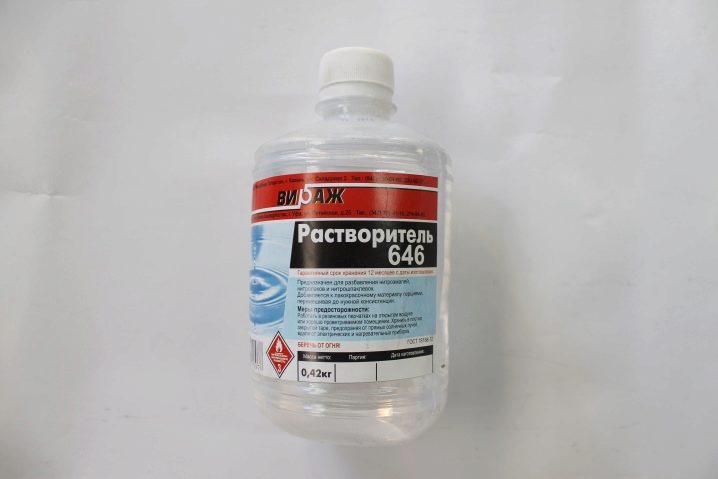
The active components of P646 are:
- toluene - 50%;
- butanol - 15%;
- butyl acetate - 10%;
- ethyl alcohol - 10%;
- ethyl cellosolve - 8%;
- acetone - 7%.
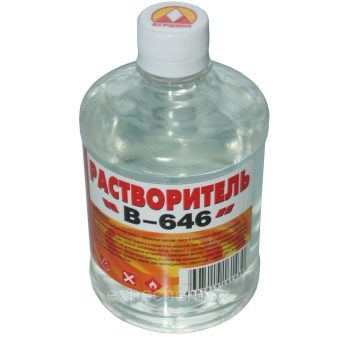

The latter does not contain acetone, it is considered not so active, due to which it is used on coatings that require the most careful and delicate handling, for example, when working with plastic. In all other cases, it is worth giving preference to the 646 brand.
Today, solvent manufacturers are conducting research aimed at reducing the concentration of toluene and acetone in the reagent. This is due to the fact that these substances are often used in the manufacture of synthetic drugs.
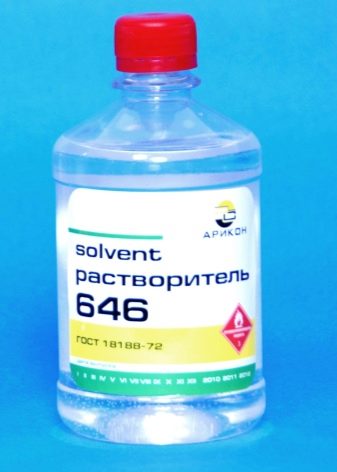

Adding solvent to the gas tank of a car
Given the physicochemical properties of solvent 646, some motorists use a solution with gasoline to clean engine parts by pouring it into the tank. On the internet, you can find recommendations on how to use the mixture correctly in order to get a good result. The substance is added to the fuel tank and additionally refueled with gasoline to the required proportion.
Goals
The main goal is to improve performance and restore the function of the machine mechanism.The liquid in the gasoline, flowing through the system, gradually dissolves scale and specific plaque on the elements of the car. As the engine runs, parts are cleaned and technical performance improves.
Effects
According to the experts, the composition significantly increases the work of the machine. After such manipulation, the following result is observed:
- inaccessible parts and nozzles inside the engine are cleaned;
- dips disappear when shifting the gearbox, which does not require intensive pressing on the gas pedal;
- stable engine operation is noted;
- speed increases;
- the mechanism warms up faster;
- reduced fuel consumption.
Recommendations
If a decision is made to improve the technical characteristics of the vehicle with a gasoline-based mixture, this issue must be investigated in advance. The use of a solvent as an engine cleaner remains controversial today.
Therefore, it is better to adhere to the following recommendations.
- Adhere to the proportion - gasoline from 20 to 40 liters, liquid form 646 - 1 liter.
- When working with a multi-component mixture, observe safety precautions.
- Pour the substance into the gasoline tank through a special funnel.
- Clean the engine no more than once every three months to avoid damaging the rubber seals.
The combination of gasoline and 646 blend helps to significantly improve vehicle performance. However, you should take into account the peculiarities of vehicle operation and use approved substances.
Composition and properties
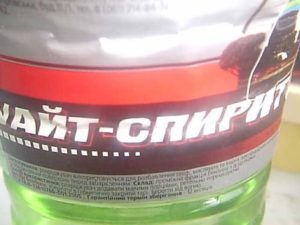 "White spirit" - obtained in the process of distillation of oil, the base of which consists of alipa and aroma hydrocarbons, is located in a group of mixed solvents.
"White spirit" - obtained in the process of distillation of oil, the base of which consists of alipa and aroma hydrocarbons, is located in a group of mixed solvents.
The second name is Nefras-S4 155/200. Due to 16% of aromatic hydrocarbons, it is placed in the 4th subgroup of the classifier.
This solvent has the following positive properties:
- effective cleaning and degreasing of surfaces;
- the ability to quickly dissolve fats, oils, rubbers, organic compounds and epoxy esters;
- fast evaporation;
- low toxic;
- its chemical compound is stable and free of deposits.
Please note: "white spirit" is produced only in pure form, without impurities - water, acid and alkali.
When purchasing "White Spirit" it is important to pay attention to the country of origin. Solvents from Russian manufacturers are more efficient in work. And American counterparts are less toxic due to additional cleaning, but because of it they lose many of their dissolving properties.
And American counterparts are less toxic due to additional cleaning, but because of it they lose many of their dissolving properties.
Properties and characteristics
As already mentioned, the characteristics and properties of white spirit are standardized: GOST 3134-78. But it is very difficult to find on sale a solvent made in accordance with GOST. Most of them are produced according to technical specifications, which have their own rules. In particular, the maximum volatile content changes.

White spirit called Nefras is produced according to TU 0251-009-51758336-2008
For example, Nefras-S4-155 / 205 is widespread. Its quality characteristics are lower than those required by GOST. But it is produced according to TU, which does not contradict the legislation. The list of GOST requirements is given in the table.
Characteristics of white spirit according to GOST
Pay attention to characteristics such as flash point. According to GOST it is + 33 ° C. This means that when heated to this temperature, fire is possible.
So you have to be very careful when using and storing. There is one more feature - the liquid accumulates a static charge. Therefore, the container is plastic or glass.
Characteristics of some solvents according to their number
Due to the emergence of a large number of different types of multicomponent solvents, the most common and frequently used of them were assigned numbers. This greatly simplifies the choice.
- P-4 is a mixture of acetone and toluene that is highly volatile. It is mainly used to dissolve alkyd paints, varnishes and enamels based on chlorinated polymers. Its use has a positive effect on the consistency of the coloring matter and its ability to form a film. In extreme cases, they can degrease the surface, but they will have to work very quickly due to its high degree of volatility. When working with this substance, it is necessary to observe fire safety rules and use personal protective equipment, since it is flammable.
- Solvent 646 is a universal composition that is used both in everyday life and in industry. Its multifunctionality is due to its multicomponent, complex composition. They can dissolve the paint, degrease the surface, and wipe off the old coating. It has a yellowish color and a very pungent odor that disappears immediately after drying. When applied to the surface, it evaporates very quickly, and the paint thinned with it dries out too quickly. Sometimes this is inconvenient, and it is replaced with weaker solutions. But the dried surface becomes smooth and shiny. They can be diluted not only with paint, but also with some types of putty. Its affordable price and availability in any store made the 646 solvent the most famous and demanded.
- RS-2 is a clear, pale yellow liquid based on xylene and white spirit, which also has good properties. It is used to dissolve oil varnishes, bitumen paints and pentaphthalic enamels. It evaporates very quickly but is very dangerous. Its extremely poisonous vapors have a strong effect on the central nervous system, internal organs, respiratory organs, skin, blood and even bone marrow. And with prolonged contact with unprotected skin, it provokes a rash. Also, when its vapors accumulate in the air, an explosion can occur. Therefore, when working with the PC-2, you must be very careful, use glasses, gloves, a respirator and ventilate the room well.
- RFG is a mixture of ethyl or isopropyl alcohol with butyl or isobutyl alcohol in a 3: 1 ratio. It is used to dilute primer paints;
- R-647 is suitable for thinning nitrocellulose enamels and primers;
- R-649 and R-650 - for diluting glyphthalic and nitrocellulose enamels, soils;
- RKCH - solvent for rubber-based paints. So toxic that it is necessary to work with it in a protective suit;
- RS (1-2) is suitable for oil paint;
- RE (1-4) - compositions for working with enamels.
Be careful, all solvents with a number starting with the letter "P" are industrial and therefore extremely hazardous to health.
What is white spirit?
The composition is one of the types of organic solvents that are obtained through direct oil refining. The name literally translates as "white spirit". White spirit is a composition that is an oily liquid related to substances with a low level of danger, however, if the vapors are inhaled for a long time, symptoms of poisoning may appear. In simple words, this is one of the grades of light kerosene fractions or dehydrated refined gasoline. As a result of its high volatile content, it cannot be used as a fuel.
White spirit - composition
The second name of the substance is "Nefras-C4". It belongs to the group of mixed solvents, which include hydrocarbons of all classes in an amount of 5% of the total mass. The substance does not have any specific formula, because it is performed by distillation, and it is impossible to say exactly what the composition will be, because everything depends on the raw material. There is a kind of solvent gasoline that is practically odorless, this is obtained due to additional purification.



